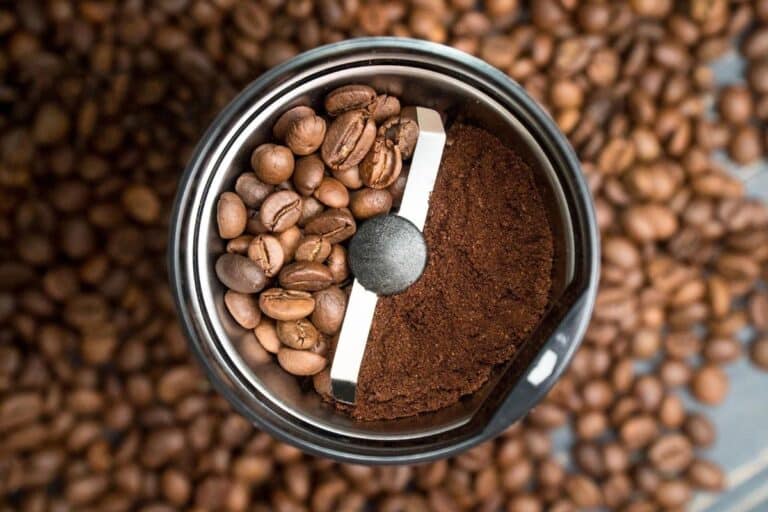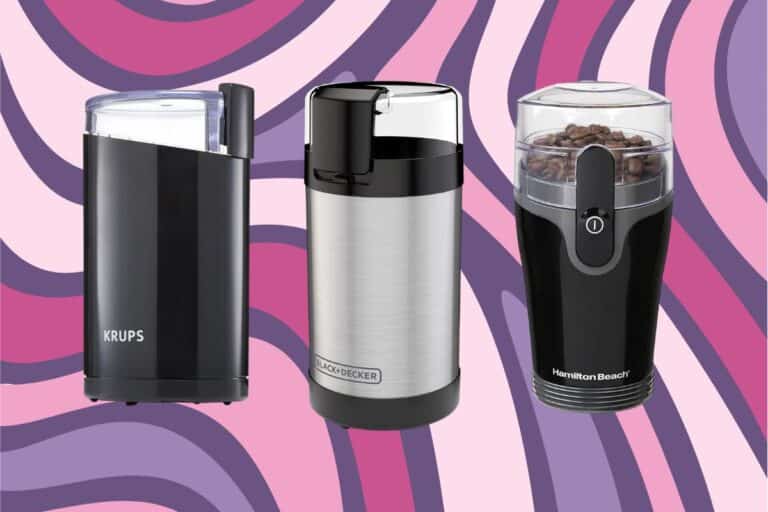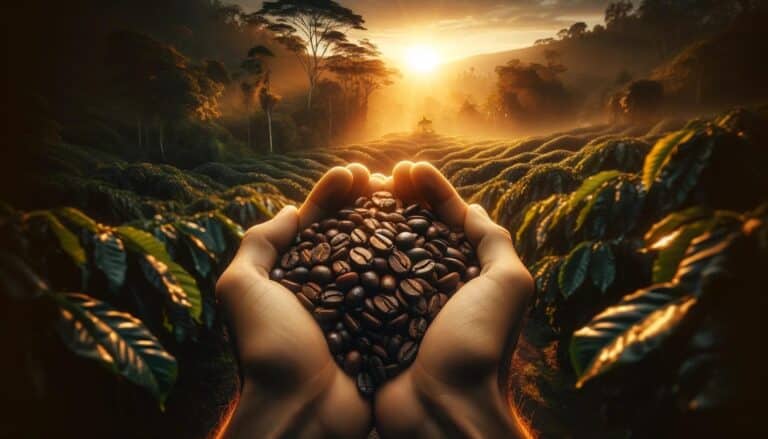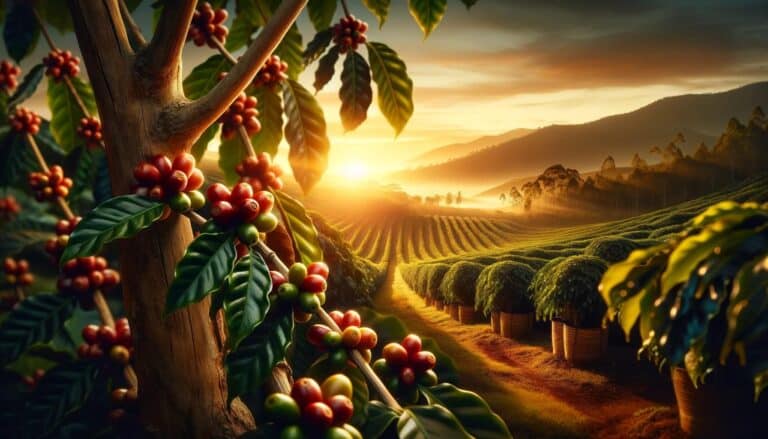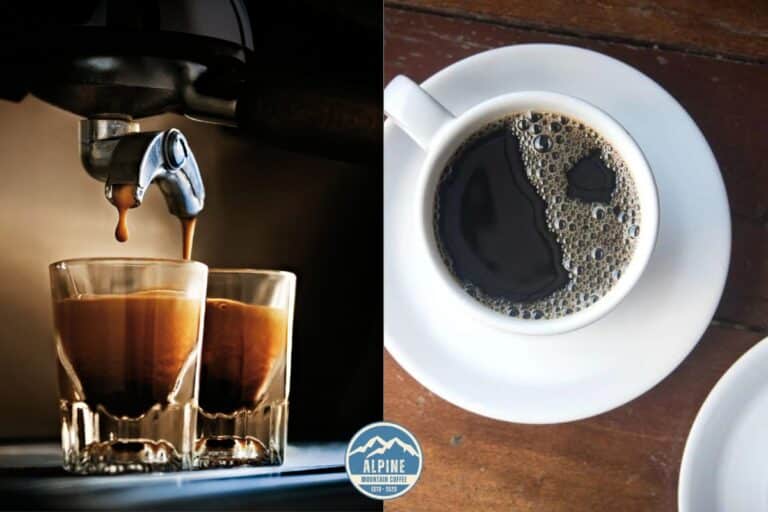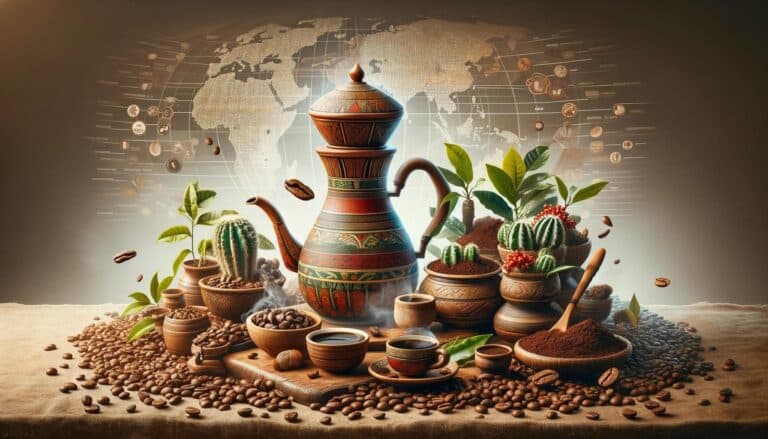Coffee, a beloved beverage revered across the globe, has not only carved its niche in the daily routines of millions but also emerged as a distinct cultural icon. Its ubiquity is unmatched, transcending borders and cultures, making it one of the world’s most consumed beverages. From a morning ritual to a social lubricant, coffee’s role in society is as varied as its flavors.
The heart of coffee’s allure lies in its incredible diversity. This diversity is not just in the types of beans or the regions of cultivation but profoundly in the ways it is prepared and enjoyed. Each type of coffee drink, from the robust simplicity of black coffee to the intricate layers of a Latte, tells a story – a story of cultural traditions, regional preferences, and evolving tastes. The world of coffee drinks is a testament to human creativity in flavor and preparation techniques, offering a spectrum of experiences to the palate.
As we delve into the myriad of coffee drinks, it’s essential to appreciate this variety. Each drink has its unique character, preparation method, and history. This exploration is not just about understanding different types of coffee but also about recognizing how a simple bean adapts to reflect the nuances of culture and personal preference, connecting people across the globe in a shared love for this versatile beverage.
Types of Coffee Drinks
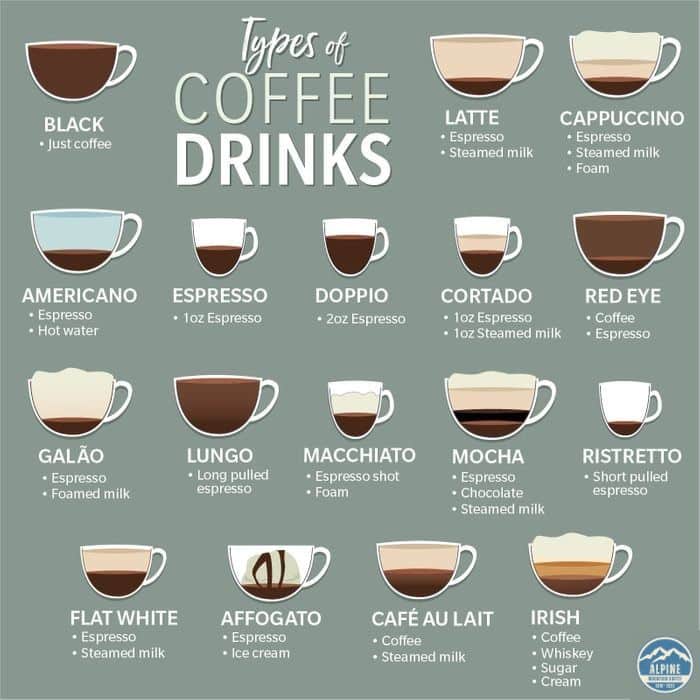
Black Coffee
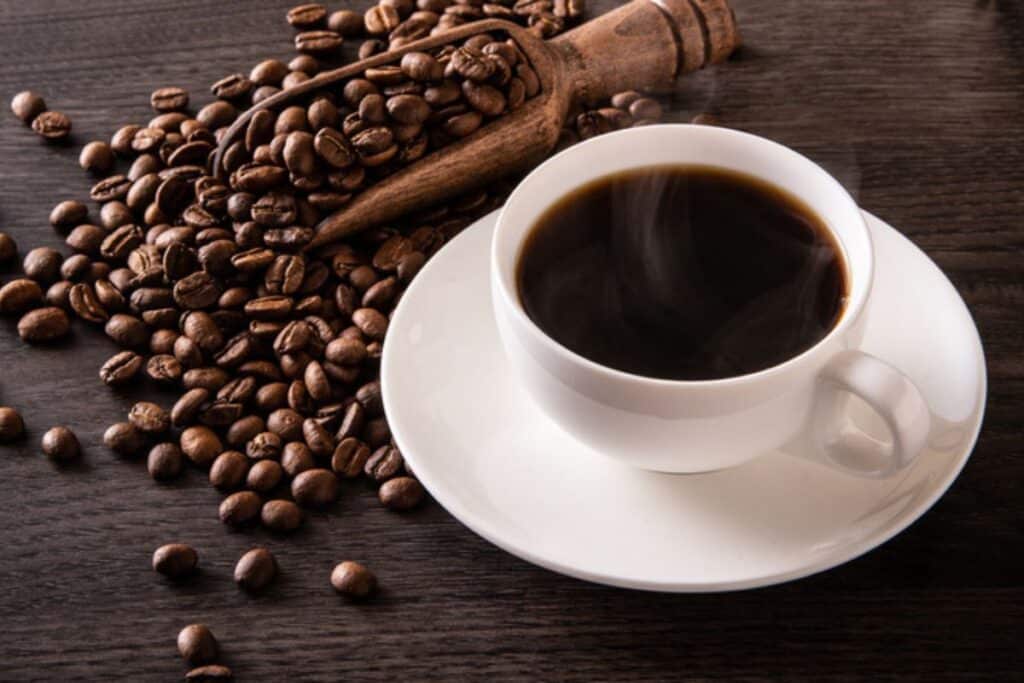
Black coffee is the purest form of coffee, unadorned with milk, sugar, or flavorings. It is coffee in its most elemental state, highlighting the bean‘s true flavors and aromas. This drink is favored by purists who seek to experience the coffee’s inherent characteristics, such as its acidity, bitterness, and full range of flavor notes, which can range from fruity and floral to nutty and chocolaty, depending on the bean‘s origin and roast.
Brewing methods for black coffee are diverse, each imparting unique qualities to the final cup. The most common methods include:
- Drip Brewing: A popular method where hot water is poured over ground coffee, which then drips into a pot. Machines can automate this process.
- French Press: Known for producing a richer and fuller-bodied coffee. Coarse grounds are steeped in hot water before being separated by a plunger.
- Pour-Over: Allows for precise control over the brewing process, including the rate of pour and water temperature. This method often highlights the nuanced flavors of the coffee.
- Aeropress: A newer method that uses air pressure to push hot water through coffee grounds, resulting in a smooth and strong cup.
- Espresso Machine: Though primarily for espresso, it can make an ‘Americano’, a diluted espresso that resembles black coffee.
Variations of black coffee can arise from the bean type, roast level, grind size, and brewing time, offering a vast array of experiences even within this seemingly simple category.
Latte
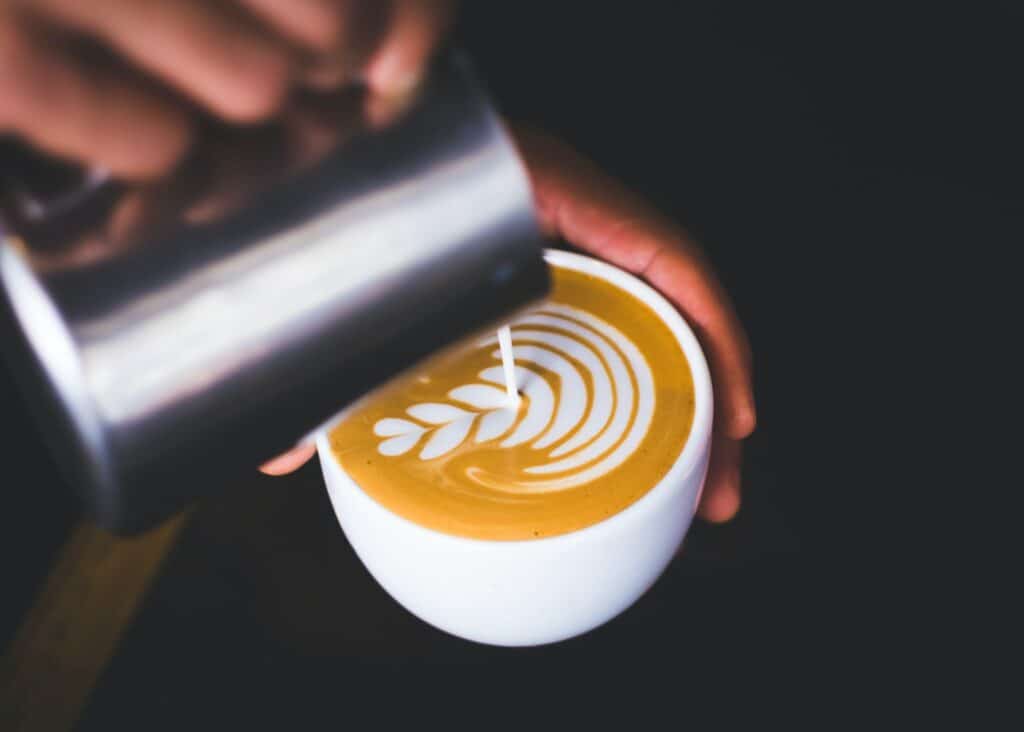
A latte, short for ‘caffè latte‘, is a popular coffee drink that originated in Italy. It’s a milky beverage that consists of one-third espresso and two-thirds steamed milk, often topped with a small layer of foam. The latte is known for its creamy texture and balanced blend of strong coffee and smooth milk.
Common variations and flavor additions include:
- Flavored Syrups: Adding syrups like vanilla, caramel, or hazelnut can transform a latte into a sweet, dessert-like beverage.
- Spices: Spices like cinnamon or nutmeg can be sprinkled on top for added flavor and aroma.
- Alternative Milks: Soy, almond, and oat milks are popular choices for those seeking dairy-free options.
- Latte Art: The foam on top of lattes provides a canvas for baristas to create intricate designs, adding an aesthetic appeal.
Cappuccino
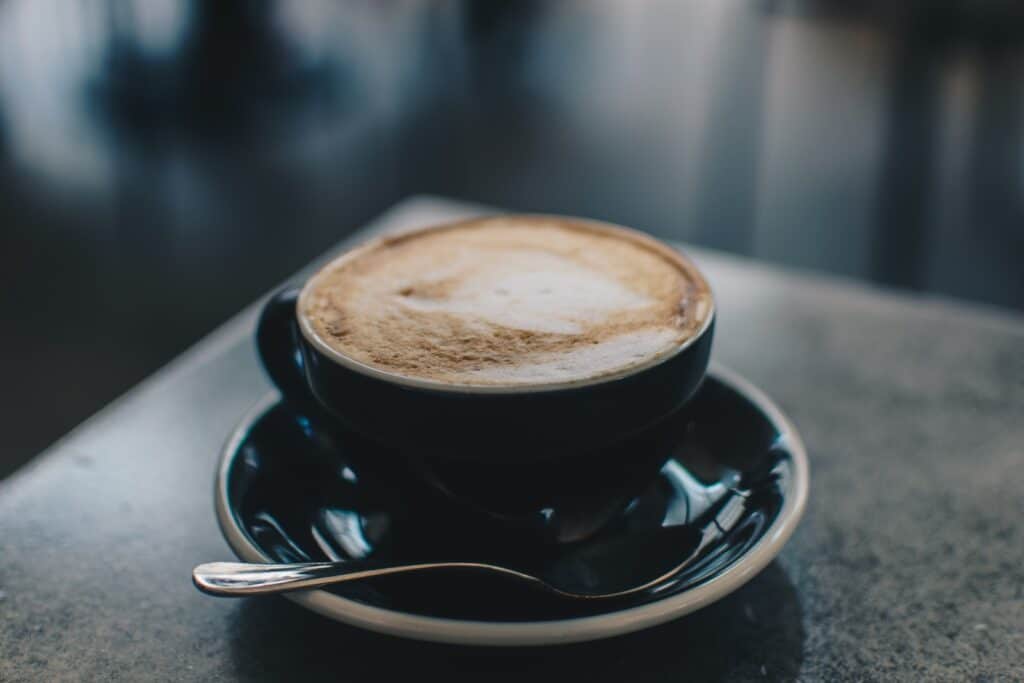
The cappuccino is another beloved Italian coffee drink, similar to a latte but with distinct differences. It typically consists of equal parts espresso, steamed milk, and frothed milk, resulting in a stronger espresso flavor compared to a latte, with a thicker layer of frothy foam on top.
Its origins trace back to the ‘Kapuziner’ coffee of the Viennese coffee houses in the 1700s, named after the Capuchin friars for its color resembling their robes. The modern cappuccino evolved with the invention of the espresso machine.
Compared to other milk-based coffee drinks:
- Lattes have more steamed milk and less foam, making them creamier and subtler in coffee flavor.
- Flat Whites, similar to lattes, are made with a thinner layer of microfoam, offering a more pronounced coffee taste.
- Macchiatos are stronger, with just a dollop of milk foam on an espresso.
Americano

The Americano, a simple yet elegant coffee drink, is believed to have originated during World War II. American soldiers stationed in Italy found the local espresso too strong for their liking. To mimic the coffee back home, they diluted the espresso with hot water, thus creating the Americano. This drink catered to their preference for a milder flavor while maintaining the rich essence of Italian espresso.
An Americano is made by adding hot water to a shot (or shots) of espresso. The typical ratio is about 1:1 or 1:2, but it can vary depending on personal taste. The result is a coffee that’s similar in strength to traditional American coffee but with the distinctive flavor profile of an espresso. It’s often enjoyed black, but some may add sugar or a small amount of milk.
The beauty of an Americano lies in its simplicity and the way it highlights the espresso’s flavor without the intensity of a straight shot. It’s typically served in a medium to large cup, allowing the drinker to savor the espresso’s aroma and flavor over a longer period.
Espresso
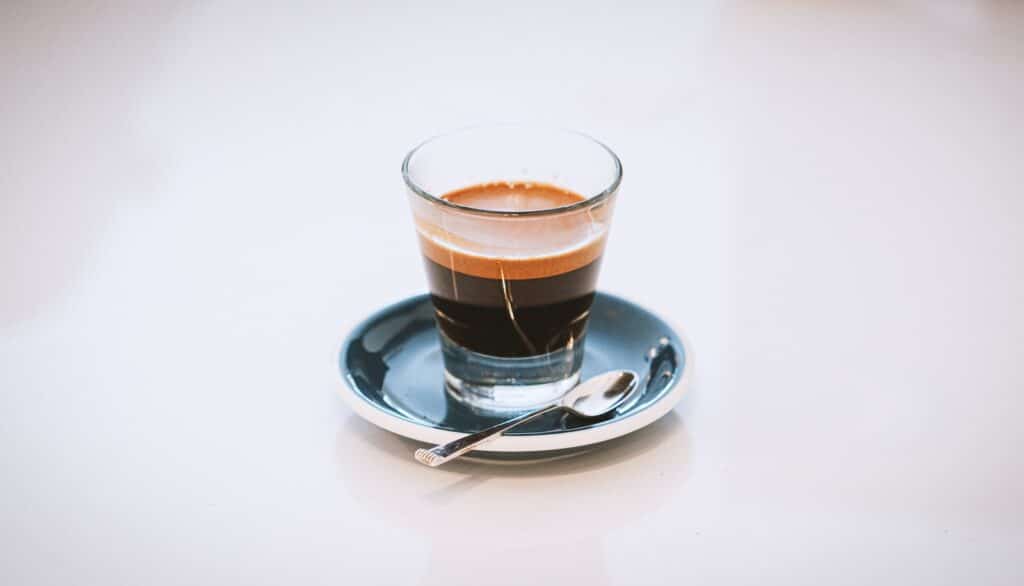
Espresso, the cornerstone of many coffee drinks, is more than just a beverage; it’s a brewing method that extracts the heart of the coffee bean. Originating from Italy, espresso is made by forcing a small amount of nearly boiling water through finely-ground coffee beans under high pressure. This process results in a concentrated, bold, and flavorful shot of coffee, topped with a layer of crema, the hallmark of a well-made espresso.
The importance of espresso as a base for many coffee drinks cannot be overstated. It’s the foundation of popular drinks like lattes, cappuccinos, macchiatos, and mochas. The strength and richness of espresso make it ideal for blending with various amounts of milk, water, and flavorings, creating a wide array of coffee beverages that cater to diverse tastes and preferences. The art of making a perfect espresso is fundamental for any barista, as it sets the tone for the quality of all espresso-based drinks.
Doppio
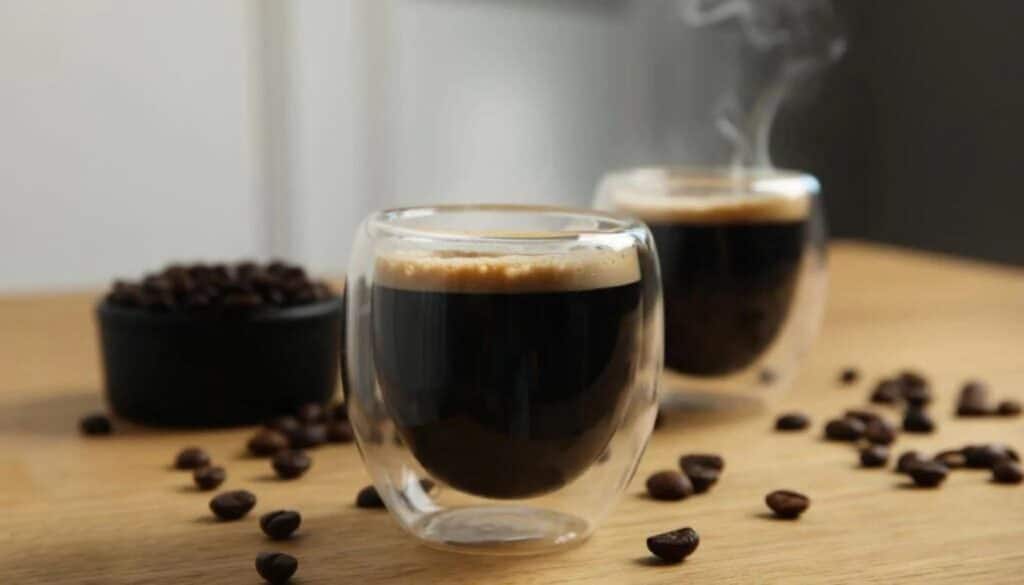
Doppio, which means “double” in Italian, is essentially a double shot of espresso. It consists of two shots of espresso combined into one cup, making it a standard choice for coffee enthusiasts who crave a stronger and more robust flavor.
The key difference between a doppio and a standard single shot of espresso is the quantity. While a single espresso typically contains about 1 ounce (30 ml) of liquid, a doppio doubles that, offering 2 ounces (60 ml). This extra volume intensifies the flavor and caffeine content, providing a more powerful coffee experience.
Despite its simplicity, the doppio has a significant impact on the world of espresso drinks. It’s a favorite among coffee aficionados who appreciate the depth and intensity of espresso without additional ingredients altering its pure form. A doppio can also serve as the base for larger milk-based coffee drinks, where a stronger coffee presence is desired.
Cortado
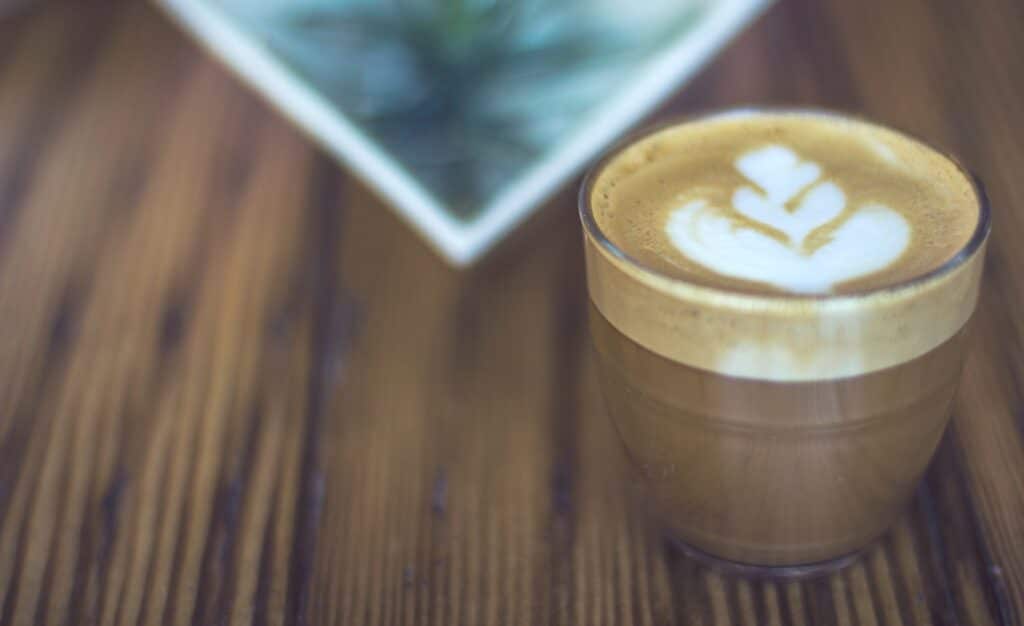
A cortado is a delightful coffee drink that balances the strength of espresso with a touch of milk to soften its acidity without overwhelming the coffee’s natural flavors. Originating from Spain, the word “cortado” means “cut” in Spanish, referring to the espresso being “cut” by a small amount of warm milk to reduce its acidity.
The typical cortado consists of an equal ratio of espresso and steamed milk, usually served in a small glass. This results in a stronger coffee taste compared to other milk-based espresso drinks but with a smoother edge than a straight espresso. The milk in a cortado is also less frothy or textured compared to a cappuccino or latte, focusing more on harmony between the milk’s sweetness and the espresso’s robustness.
While the basic idea of a cortado remains consistent, regional variations do exist. For instance, in some parts of Latin America, a cortado might be served with a slightly higher ratio of milk, while in other regions, different types of milk or flavorings might be added.
Red Eye
The Red Eye is a coffee drink known for its high caffeine content, making it a popular choice for those in need of an extra energy boost. The uniqueness of the Red Eye lies in its composition: a full cup of regular drip coffee combined with one or more shots of espresso. This combination not only intensifies the caffeine kick but also adds the rich flavor of espresso to the more mellow profile of drip coffee.
The Red Eye is an ideal choice in situations demanding heightened alertness or when combating fatigue. It’s a favorite among students during exams, professionals facing long work hours, or anyone who needs to stay awake and alert for extended periods. The Red Eye offers the comfort of traditional coffee with an added espresso punch, making it a practical and potent coffee choice.
Galão
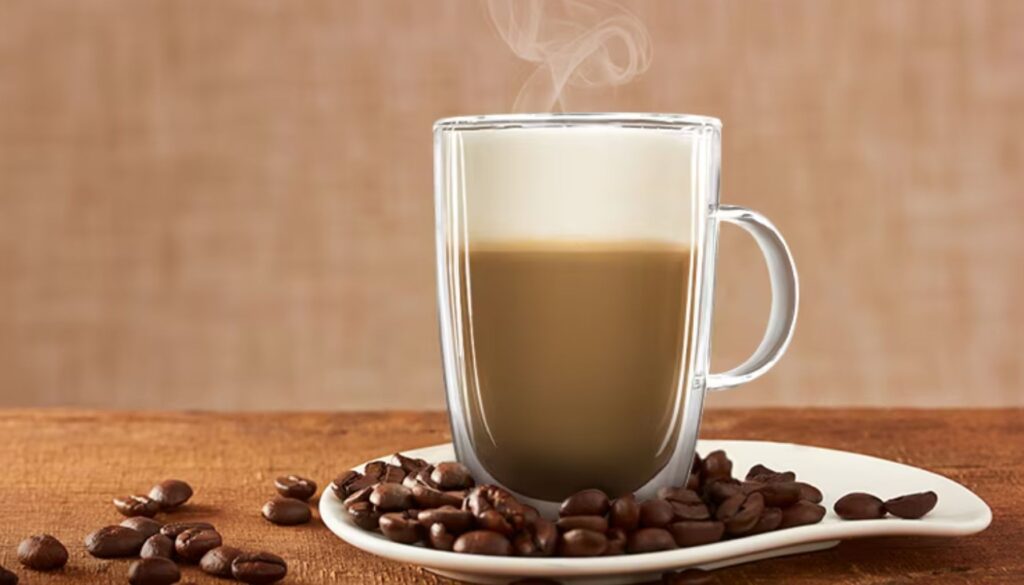
Galão is a traditional Portuguese coffee drink, known for its smooth and creamy texture. It’s a lighter and milkier variant of coffee, somewhat akin to a latte but with a distinctive Portuguese twist.
To make a Galão, one part espresso is mixed with three parts frothed milk. This ratio results in a beverage that is much lighter in coffee flavor than a latte, showcasing the creamy sweetness of the milk. Typically served in a tall glass, a Galão offers a visually appealing layering effect of coffee and milk.
The Galão is best enjoyed as a leisurely drink, often accompanying breakfast or a mid-afternoon snack. In Portugal, it’s commonly paired with pastries like the famous ‘pastel de nata’, creating a delightful combination of sweet and creamy flavors. The Galão, with its mild and comforting taste, is a perfect introduction to coffee for those who prefer milder flavors or for coffee enthusiasts looking to explore different regional variations of familiar coffee drinks.
Lungo
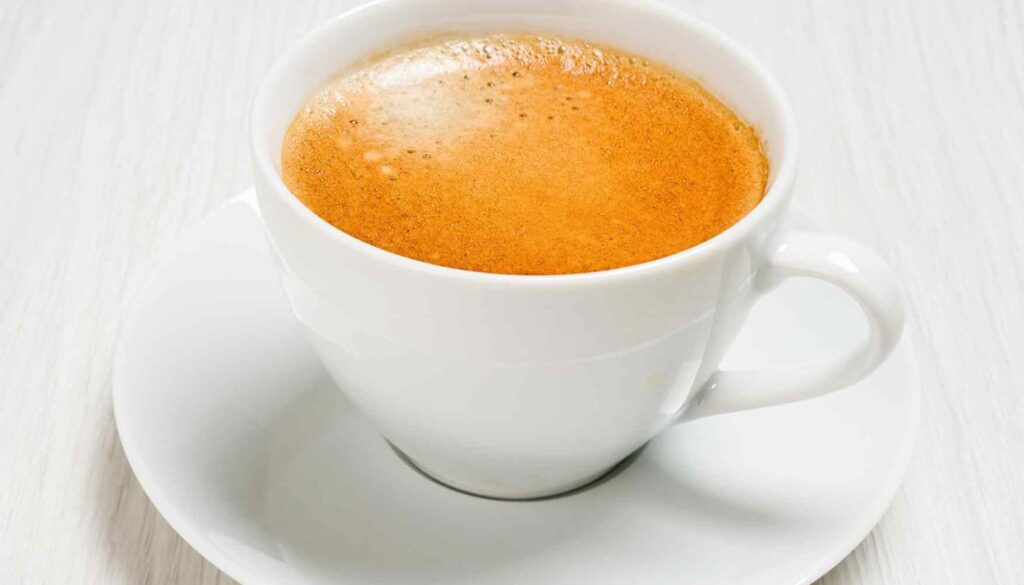
A Lungo is an espresso-based coffee drink that is often misunderstood or confused with other espresso varieties. The term “Lungo” is Italian for “long,” and this drink is essentially a longer or extended espresso shot. Unlike a standard espresso which is made by forcing hot water through tightly-packed coffee grounds for a short duration, a Lungo is made by allowing more water to pass through the coffee grounds. This results in a larger coffee, both in volume and in brewing time, typically around 4-6 ounces.
The key difference between a Lungo and a regular espresso lies in this water quantity. More water means that a Lungo is less strong per ounce but more bitter, as the additional water extracts more flavors and compounds from the grounds, including those that are usually not present in a shorter espresso.
To brew a perfect Lungo, consider the following tips:
- Grind Size: Use a slightly coarser grind than espresso, as the longer extraction time can lead to over-extraction with very fine grounds.
- Water Temperature: Ideal brewing temperature is around 195-205 degrees Fahrenheit.
- Extraction Time: Aim for an extraction time of around 40-60 seconds, compared to 20-30 seconds for a regular espresso.
- Coffee-to-Water Ratio: Experiment with the ratio to find the right balance for your taste, but generally, a Lungo uses twice the amount of water used in an espresso.
Macchiato
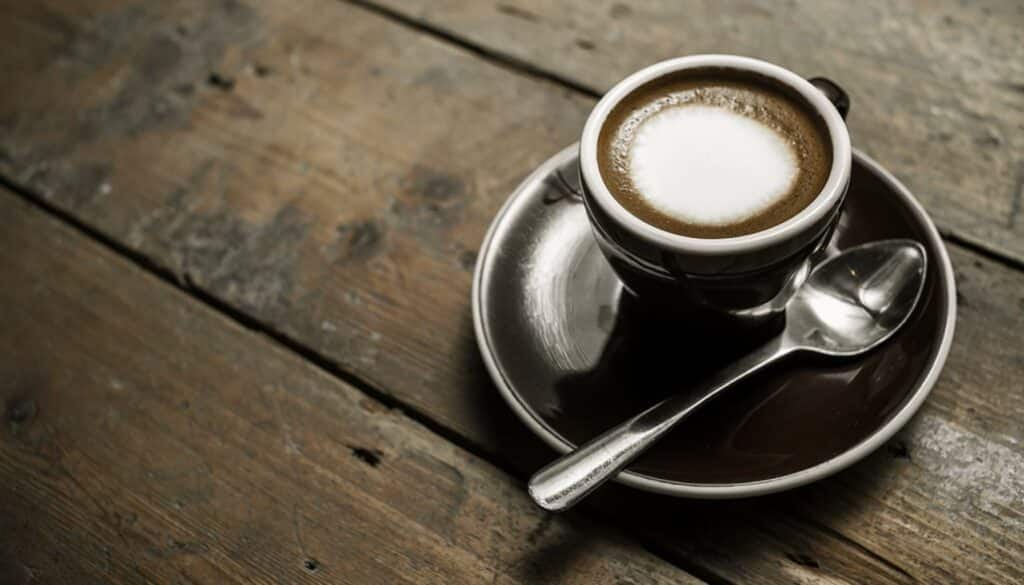
The Macchiato, which means “stained” or “spotted” in Italian, is a traditional espresso with a small amount of milk added. It’s designed to be a strong coffee drink with just a hint of milk to take the edge off the espresso’s bitterness.
There are two main variations of Macchiato:
- Espresso Macchiato: This is the classic version, typically consisting of one shot of espresso with a small amount of frothed milk or cream on top.
- Latte Macchiato: This is essentially the reverse of an Espresso Macchiato, where steamed milk is “stained” with a shot of espresso.
Compared to a Latte or Cappuccino, a Macchiato is much stronger in coffee flavor. A Latte is predominantly milk, with a shot of espresso and a small amount of foam, making it much creamier and larger in volume. A Cappuccino, meanwhile, is a balanced trio of espresso, steamed milk, and frothed milk, offering a frothier and more evenly mixed experience.
Mocha
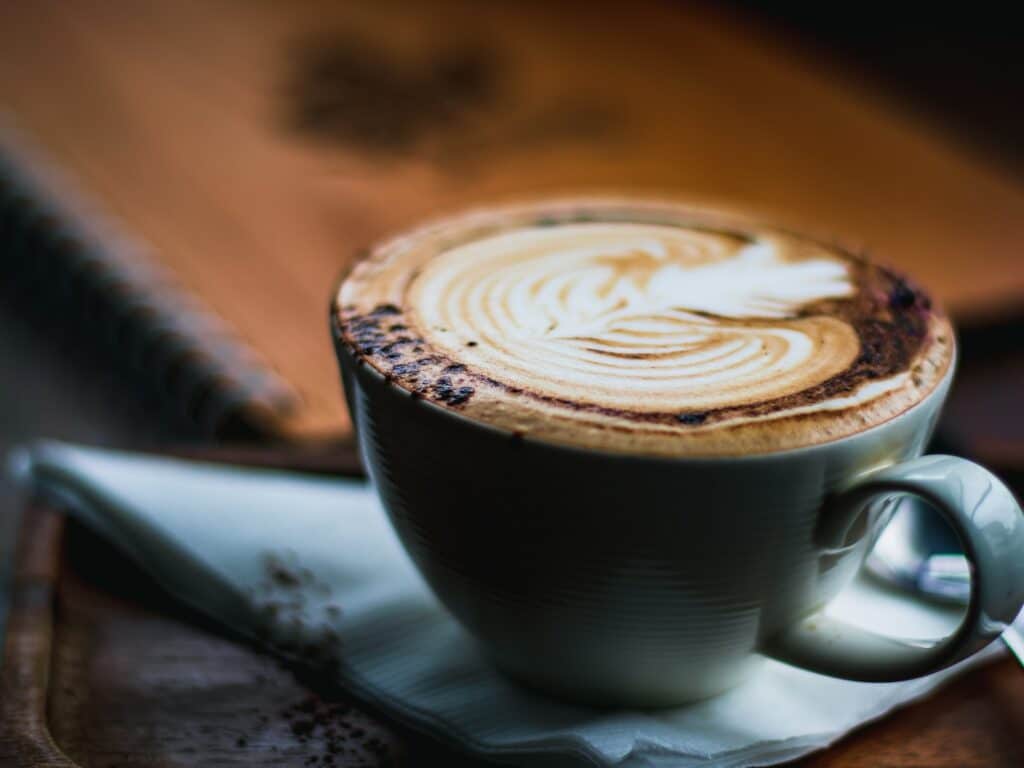
The Mocha, or Caffè Mocha, is a delightful blend of hot chocolate and coffee, offering a sweet and indulgent experience. Named after the Mocha bean, which is known for its natural chocolatey flavor, this drink typically combines espresso, steamed milk, and chocolate, usually in the form of cocoa powder or chocolate syrup.
The ingredients of a Mocha usually include:
- Espresso: The coffee base providing the richness and depth.
- Chocolate: This can be in the form of chocolate syrup, cocoa powder, or even melted chocolate.
- Steamed Milk: To create a creamy texture.
- Whipped Cream: Often used as a topping for an extra indulgent touch.
What makes Mocha unique in the coffee world is its dessert-like quality. The addition of chocolate not only complements the strong coffee flavor but also transforms the drink into a luxurious treat. Ideal for those with a sweet tooth or as a comforting beverage on a cold day, a Mocha offers a unique experience that bridges the gap between a coffee drink and a sweet dessert.
Ristretto

A Ristretto is a concentrated and intense form of espresso, known for its bold flavor and rich aroma. The term “Ristretto” in Italian means “restricted,” and this is reflected in its brewing technique. To make a Ristretto, a similar amount of coffee grounds as an espresso is used, but the extraction time is shorter, and less water is forced through the grounds. This results in a smaller, more concentrated shot, usually about half the volume of a regular espresso.
The key difference between a Ristretto and a standard espresso is in the extraction. While an espresso is already a concentrated coffee, a Ristretto takes this concentration to the next level. It emphasizes the coffee’s sweet and aromatic elements, as the shorter extraction time doesn’t pull out the bitter compounds that are typically extracted towards the end of an espresso shot.
Flat White
The Flat White, originating from Australia and New Zealand in the 1980s, is a coffee drink that has gained popularity worldwide for its smooth and velvety texture. It consists of a double shot of espresso topped with a thin layer of microfoam (steamed milk from the bottom of a frothing jug, which is velvety and not too airy or stiff).
Comparing a Flat White with a Latte and Cappuccino:
- Latte: A latte has more steamed milk and a light layer of foam on top, resulting in a milkier and larger drink.
- Cappuccino: A cappuccino has an equal distribution of espresso, steamed milk, and frothed milk, making it frothier and lighter in texture than a Flat White.
The Flat White stands out for its higher coffee-to-milk ratio and the use of microfoam, which gives it a more pronounced coffee flavor than a latte, and a creamier texture compared to a cappuccino.
Affogato

An Affogato is a classic Italian treat that combines two beloved elements: coffee and ice cream. “Affogato” means “drowned” in Italian, which perfectly describes the serving method of this dessert. An Affogato typically consists of a scoop of vanilla gelato or ice cream “drowned” in a shot of hot espresso.
The unique combination of hot and cold makes the Affogato a delightful dessert. The heat of the espresso slowly melts the ice cream, creating a rich and creamy concoction that is both a drink and a dessert.
Serving suggestions for an Affogato include:
- Glassware: Serve in a clear glass to showcase the beautiful layers of coffee and melting ice cream.
- Variations: Experiment with different flavors of ice cream, like hazelnut or chocolate, for a different twist.
- Add-ons: Consider adding a sprinkle of cocoa powder, chocolate shavings, or a shot of liqueur for an extra layer of flavor and sophistication.
Café au Lait
Café au Lait, a French term meaning “coffee with milk,” is a traditional French coffee drink that has been a staple in French cafés for many years. It is a simple yet elegant beverage that combines equal parts of brewed coffee and steamed milk. The coffee used in Café au Lait is typically a strong, dark roast, which is then softened by the addition of warm milk, creating a harmonious balance between the two.
What sets Café au Lait apart from other milk-based coffees is its use of brewed coffee instead of espresso. For instance:
- Lattes and Cappuccinos are made with espresso, which gives them a more concentrated coffee flavor. Lattes have more milk and less foam than cappuccinos.
- Flat Whites also use espresso, but with a higher coffee-to-milk ratio and a focus on microfoam.
Café au Lait is usually served in a large cup or bowl, which is traditional in France, particularly for breakfast. This larger serving size makes it a more leisurely drink, perfect for enjoying with a croissant or a piece of baguette in the morning.
Irish Coffee
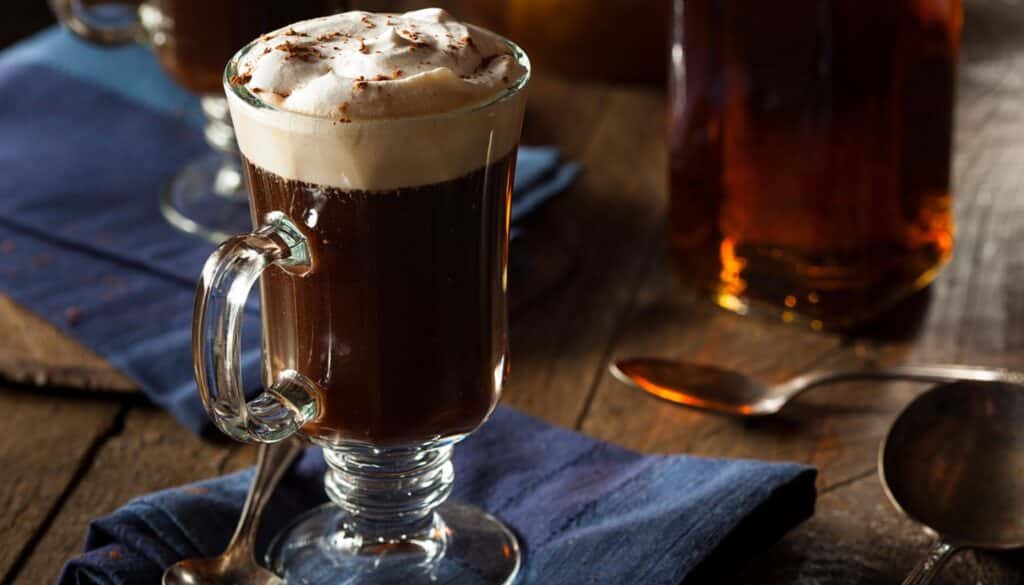
Irish Coffee is a classic cocktail that combines coffee, Irish whiskey, sugar, and cream. It was created in the 1940s by Joe Sheridan, a chef at Foynes Airbase in Ireland, as a way to warm up tired passengers during the cold winter months.
The classic recipe for Irish Coffee is straightforward:
- Brew a strong, hot cup of coffee.
- Stir in a teaspoon of sugar (brown sugar is traditional) until dissolved.
- Add a generous shot of Irish whiskey.
- Gently pour lightly whipped cream over the back of a spoon so it floats on top of the coffee.
Irish Coffee is traditionally served in a clear glass to show off the layers of coffee and cream. It’s a popular choice on cold evenings or as a festive after-dinner drink. The warmth of the coffee and whiskey, combined with the sweetness of the sugar and the richness of the cream, make it a comforting and indulgent treat.
Over the years, various variations of Irish Coffee have emerged, including:
- Using different types of whiskey or even other spirits like rum or bourbon.
- Adding flavorings to the cream, such as vanilla or cinnamon.
- Using flavored syrups in the coffee for additional sweetness or flavor.
Irish Coffee is more than just a drink; it’s an experience, blending the invigorating strength of coffee with the warmth of whiskey, sweetened by sugar, and smoothed by cream. It’s perfect for festive occasions, as a holiday treat, or simply as a cozy end to a chilly day.
Conclusion
The world of coffee drinks is as diverse and rich as the cultures and individuals that have shaped it. From the strong and straightforward black coffee to the sweet and indulgent mocha, the realm of coffee offers something for every palate. Each drink we’ve explored – be it the creamy latte, the robust Americano, the delicate Cortado, or the unique Affogato – stands as a testament to the versatility and universal appeal of coffee. The variation doesn’t just end with these names; each coffee drink can be tailored further, with different beans, roasting methods, and additions, making the possibilities nearly endless.
This exploration into the various types of coffee drinks is more than just an introduction to different flavors and preparations. It’s an invitation to experience the rich tapestry of coffee culture. Every coffee drink has a story, a background rooted in traditions, innovations, and personal preferences. By trying different types of coffee, we connect with different parts of the world, different moments in history, and different culinary philosophies.
As you continue your coffee journey, remember that each cup is an opportunity for discovery and delight. Whether you’re savoring a familiar favorite or venturing into untried territory, the world of coffee is vast and welcoming. So, the next time you order or brew a coffee, consider stepping out of your comfort zone. Try a new variation, experiment with a different brewing method, or explore a new blend of beans. You might just find a new favorite, or at the very least, you’ll have a better understanding and appreciation of this remarkable beverage that brings so much joy, comfort, and connection to our daily lives.
